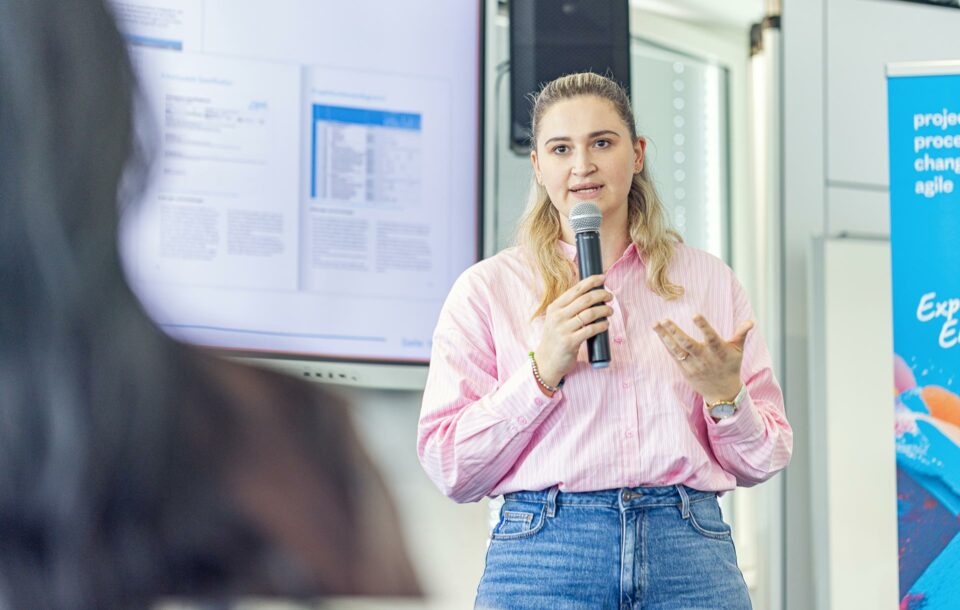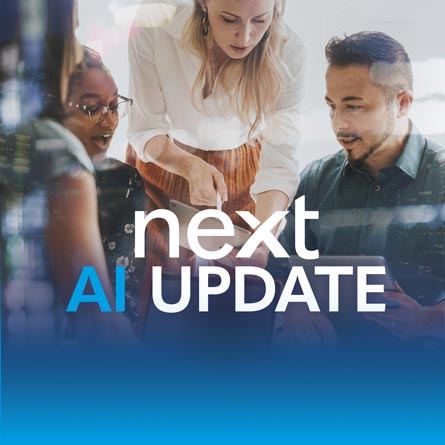
Can you learn Agile methods through play? No – you actually have to! Experiential learning anchors knowledge more sustainably. Next-level trainers Alma Skrgic-Pandur and Michael Goldschmidt are convinced of this. For a major client in Switzerland, they used gamification to elevate a training course on agile project management.
How Gamification Transforms Training – and Inspires People in the Long Term
By Thomas Weidinger
Imagine building a house, but nobody knows exactly how. Ten people set off, collect materials, and discuss wildly – only to fail miserably at the first wall. Welcome to agile project management – or rather, to a next-level Minecraft training world.
What looks like a game at first quickly turns out to be a highly effective learning laboratory. "Away from listening and toward experiencing" is how Alma Skrgic-Pandur and Michael Goldschmidt describe the philosophy behind the new training format. Together, they showed a major customer in Switzerland how gamification can merge theory and practice.
Experiences are memorable, and emotions stick – that's precisely the recipe for success. Participants don't just understand agile methods rationally – they experience them. You can't learn agility from a flip chart. You have to experience them, and gamification brings theory and practice together in a refreshing way.
What makes this approach special is that participants experience agile principles firsthand in a dynamic online environment. Sprints, rapid course changes, and team coordination are all simulated and experienced. The enthusiasm? Great! Not only among the participants, but also among the customers.
The assignment: Combine the diversity of experience
- Every year, Swiss Accident Insurance (SUVA), Switzerland's largest accident insurance company, prepares qualified employees for IPMA® Level D certification.
- The challenge is working with heterogeneous teams, ranging from Scrum professionals to agility newcomers.
- Gamification is an add-on to training that focuses on experience rather than instruction, thus significantly accelerating the classic learning curve.
- Blended learning and over 70 e-learning modules from next level, as well as practice-oriented simulations, complement the format perfectly.
Agile and classic: no either/or
The training structure at Next Level precisely reflects the practice in which agile models have long been the norm. Hardly any company exclusively follows agile principles or rigidly relies on the classic waterfall model. You must know and be able to do both. On the one hand, it's about strictly adhering to costs and deadlines; on the other hand, it's about flexibly reacting to new customer requirements.
"Traditional and agile methods are not opposites or mutually exclusive – quite the contrary, they complement each other."
Alma Škrgić-Pandur
The key to success is a hybrid approach that combines traditional and agile methods. Stakeholder, risk, and resource management remain indispensable, for example. At the same time, the iterative approach – working in sprints – is an effective way to react flexibly.
Participants learn both approaches because 29 competence elements are tested for the IPMA Level D certification, 20 of which come from classic project management and nine of which come from agile methods. Gamification makes these principles tangible by asking participants to react quickly to changes. This learning experience is invaluable.
Hands-On Practice: Minecraft as an Agile Learning Lab
Setting: A virtual Minecraft world with ten to twelve participants and clear tasks, such as building a house according to specific specifications. Participants quickly realize that if they start without planning, hoard resources, and don't communicate, they will lose valuable time. "Many people just run off," laughs Michael Goldschmidt." But the feedback shows them how important planning, communication, and role clarification are."
Short theoretical inputs are provided between sprints. The newly acquired knowledge is immediately applied in practice – an ideal agile learning lab.
"I am passionate about online gaming and apply this experience to the business context. Minecraft offers almost unlimited possibilities for simulating real project scenarios."
Michael Goldschmidt
"Project management has never been so lively!"
What about the feedback? Enthusiasm across the board, even from experienced project managers. Experiential learning creates "aha" moments that are often missing in traditional seminars. Particularly impressive were
- The noticeable improvement in team dynamics from sprint to sprint
- Growing confidence in agile methods was also impressive
- Skepticism towards innovations decreased
Initial differences between "gaming pros" and beginners were resolved through active communication and cooperation. "The game reflects the group dynamic," Michael explains. "It raises awareness of roles, communication, and conflict resolution. Some participants felt for the first time how agility works in stressful situations, and that's what sticks with them – not the set of slides."
"We wanted the participants to experience agile methods, not just talk about them. It was impressive how quickly they integrated into the team structure, from the initial skepticism to the aha moments."
Alma Škrgić-Pandur
Management perspective: seriousness and effectiveness combined
Initially, there is often skepticism. Can Minecraft really be used to train management skills? The answer is yes, as long as the concept and implementation are sound. Some managers fear that gamification could seem dubious. However, experience shows that: Knowledge that is emotionally anchored is retained and applied in everyday life.
"When managers see how effective gamification is, skepticism quickly turns into enthusiasm," says Alma. Michael adds: "As soon as the first successes become apparent, the preconception that 'playing is a waste of time' usually disappears faster than expected."
Outlook for the future: Learning will become more immersive
Alma and Michael agree that experiential learning is here to stay and will continue to grow. This is because new generations demand more than PowerPoint presentations; they want to experience, experiment, and create.
Further gaming concepts are already being planned at the next level because learning by experiencing beats learning by listening. Playful approaches are also becoming more prevalent in consulting projects. "Once you've experienced how gamification can break down barriers, you won't want to do without it," Michael emphasizes.
Link to the interview with Mathias Lang (SUVA):
About the Trainers and Author:
Mag. Alma Škrgić-Pandur is a consultant at the Swiss branch of next level. She is also a lecturer in project management and certified project manager IPMA® Level D and Scrum Master™.
Michael Goldschmidt is a project and process management trainer, a process practitioner (TÜV Austria), and a gamification pioneer at next level.
Together, they developed a customized gamification training program for Suva.
Mag. Thomas Weidinger is a content creator specializing in text, images, and sound.

